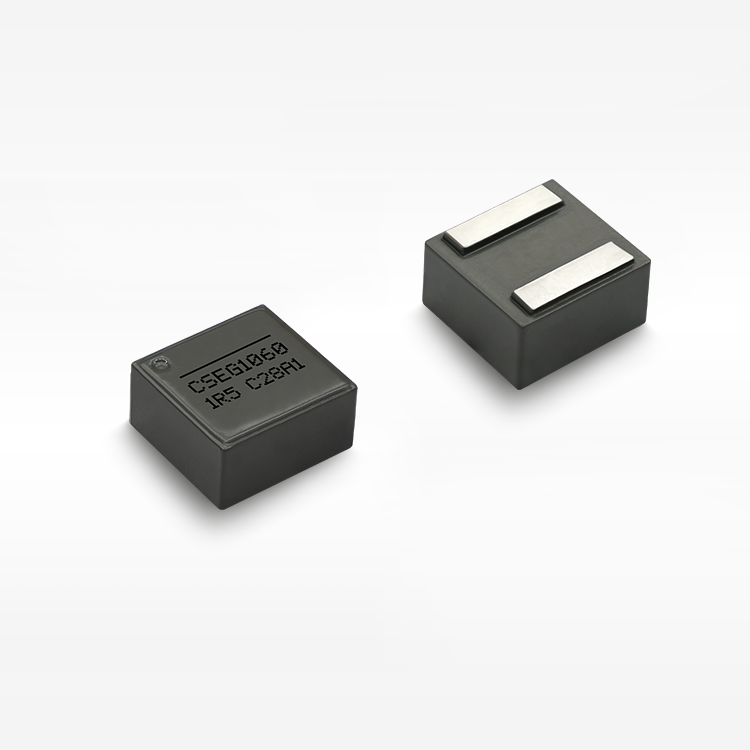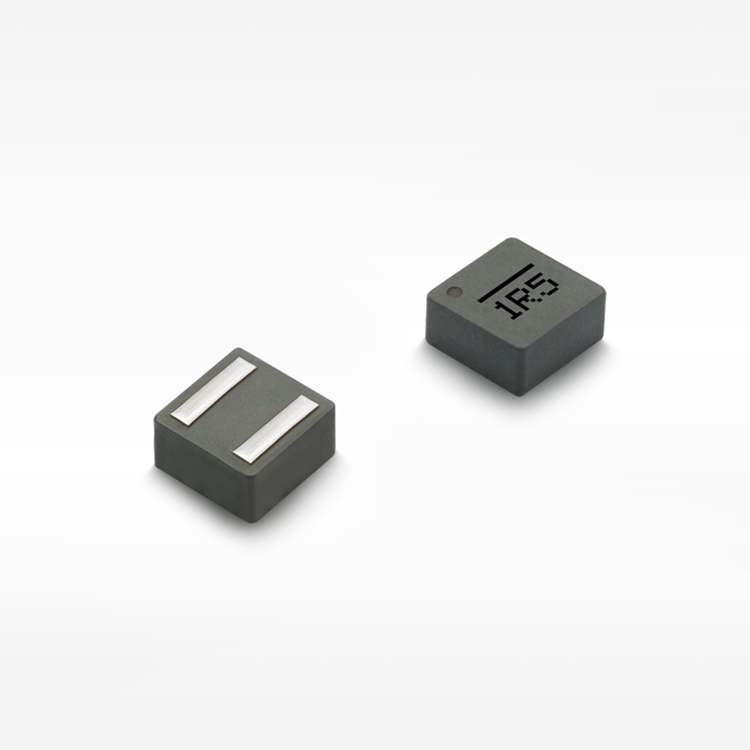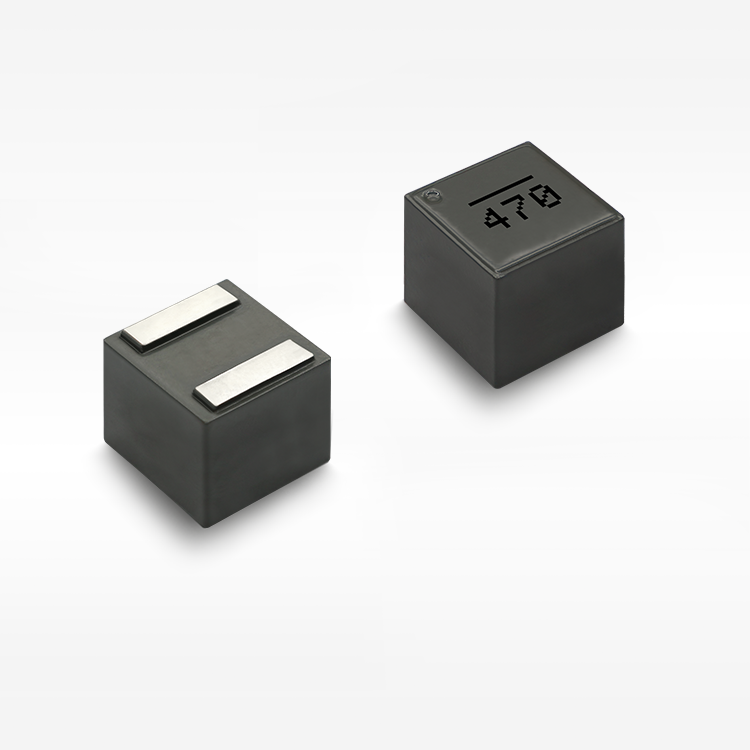Introduction
Molded power inductors play a pivotal role in electronic circuits, especially when it comes to reducing noise. Their structure is carefully designed to serve the primary purpose of managing and minimizing electromagnetic interference (EMI), which is a common concern in electronic design. A molded power inductor typically consists of a magnetic core encapsulated with a magnetic powder and a wire coil, forming a unified component that effectively reduces both radiated and conducted noise in circuits.
One of the key features that distinguish molded power inductors is their encapsulated design. This robust structure offers enhanced performance by minimizing EMI, a phenomenal advantage in circuit performance and reliability. The magnetic encapsulation allows for better thermal management and lower core losses, making molded power inductors superior in maintaining electronic device stability by reducing unwanted noise.
The CSEG Series offers a notable example of the excellence found in molded power inductors. Known for its compact size and robust construction, this series provides significant advantages such as high current handling capabilities and excellent DC bias properties. The encapsulated design effectively suppresses EMI, which makes the CSEG Series ideal for Applications where space is constrained but performance cannot be compromised, such as in telecommunications and computing systems.
The Role of Molded Power Inductors in Electronics
Molded power inductors are pivotal components in modern electronics, primarily due to their energy storage and filtering capabilities that minimize noise. They efficiently store energy in the form of magnetic fields, smoothing current waveforms and reducing voltage spikes, which is essential in maintaining stable performance for electronic devices. By facilitating energy transfer with low resistance and high current capacity, these inductors are crucial in achieving efficient power management.
These inductors are particularly effective in applications such as switching power supplies and RF circuits, where noise reduction is paramount. In switching power supplies, molded power inductors help stabilize output voltage and enhance efficiency by filtering high-frequency noise. Similarly, in RF circuits, they are instrumental in minimizing electromagnetic interference, ensuring clear signal transmission. These examples underscore the critical role that molded power inductors play in various electronic applications, significantly contributing to noise reduction and performance optimization.
Advantages of Using Molded Power Inductors
Molded power inductors bring increased efficiency and reliability to circuit designs, a point underscored by numerous studies. For instance, their integral construction with metallic magnetic cores results in improved magnetic saturation and reduced DC bias, leading to enhanced overall performance in electronic circuits. The absence of core gaps further minimizes acoustic noise, providing a more stable and reliable operation under varying conditions. These performance characteristics make molded power inductors a preferred choice in modern electronics that demand superior efficiency and dependability.
Additionally, the space-saving design of molded power inductors is crucial for compact electronic applications. By integrating the coil within the molded structure, these inductors offer a more compact footprint compared to traditional designs. This compactness not only optimizes space utilization in densely populated circuit boards but can also drive down manufacturing costs and streamline assembly processes. As electronics continue to become smaller and more complex, the ability to fit more components into the same area without compromising performance is a significant advantage, enabling more innovative and efficient device designs.
Specifications and Selection Criteria for Molded Power Inductors
When choosing molded power inductors, understanding the significance of the inductance value and current handling capabilities is crucial for specific applications. Inductance value determines how much energy can be stored, which is essential for the efficiency of electronic circuits. High current handling capabilities are also vital as they allow inductors to function effectively without overheating or losing performance in high-power applications. For power-intensive tasks, it is advisable to select molded power inductors with high inductance and current ratings to ensure optimal performance and reliability.
Temperature ratings and material considerations are critical factors influencing the performance of molded power inductors. Operating temperature can impact the inductor's reliability and efficiency, particularly in high-temperature environments. Using materials with high thermal stability, such as metallic magnetic cores, can enhance performance. Industry standards, such as those provided by the International Electrotechnical Commission (IEC), should be adhered to ensure that the inductors meet the necessary safety and operational requirements. Selecting inductors that conform to these standards will result in better long-term performance and safety.
Installation and Application Considerations
When incorporating molded power inductors into PCBs, specific design guidelines should be followed to ensure effective performance. The placement of molded power inductors is crucial; they should be located away from components that are sensitive to magnetic interference. This helps in minimizing potential disruptions and ensuring the inductors function as intended. Implementing proper grounding and maintaining adequate spacing between inductors and other components can prevent magnetic coupling, enhancing overall circuit performance.
Incorporating molded power inductors with other circuit components requires strategic integration for optimal performance. It is advisable to position these inductors near the input power source, providing a stable pathway for current. Additionally, ensuring good electrical connections and using appropriate layout techniques can significantly improve the functioning of molded power inductors. A methodical layout that minimizes trace length and employs decoupling techniques can lead to a more efficient circuit design, maximizing the benefits of using molded power inductors in electronic applications.
Real-World Applications of Molded Power Inductors
Molded power inductors are essential components in consumer electronics like smartphones and tablets, where they contribute significantly to enhancing device performance. They help manage power supply issues efficiently, thus improving battery life and supporting intricate functionalities within these compact devices. With growing demands for higher performance and smaller sizes, molded power inductors are increasingly integrated into the design of consumer electronics to meet these challenges.
In automotive systems, particularly within electric vehicles (EVs) and infotainment systems, molded power inductors play a crucial role. They assist in reducing noise and improving energy efficiency, which is vital for the smooth operation of EVs. By maintaining reliable power conversion and minimizing electromagnetic interference, molded power inductors enhance the overall functionality of automotive electronic systems, ensuring a seamless driving experience with enhanced fuel efficiency.
FAQ
What are molded power inductors used for?
Molded power inductors are used in electronic circuits for reducing noise, managing electromagnetic interference (EMI), and enhancing power management efficiency.
How do molded power inductors reduce noise?
They reduce noise by effectively storing energy in magnetic fields, smoothing current waveforms, and reducing voltage spikes, which are crucial for minimizing electromagnetic interference.
What are the advantages of using molded power inductors in consumer electronics?
These inductors offer a compact design, enhance device performance by managing power supply efficiently, and support complex functionalities in smaller devices.
Are molded power inductors suitable for automotive applications?
Yes, they are highly suitable as they help reduce noise, improve energy efficiency, and ensure reliable power conversion essential for electric vehicles and infotainment systems.






